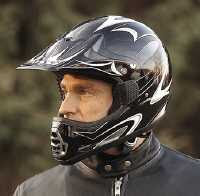The most professional devices that can measure an engine's power and torque are the engine dynamometers. They are used by the engine manufacturers themselves.
In order to perform the measurements on the engine (this is done before the engine in mounted into the chassis), the engine is connected to the dynamometer with a shaft. Afterwards, the engine is ignited, and it is set to run at a constant speed, and the torque that is applied to the dynamometer is exactly the engine's torque. The results of these measurements are quite accurate and there are no losses because of friction.
The new-generation dynamometers are connected to computers and they are very easy to handle and operate. They can almost perfectly simulate racing and normal driving conditions.
When driving on the road, there are a few factors that may modify the way an engine acts and the power it produces. Among these there's the air's temperature, level of humidity and also its pressure. These can be taken into consideration when testing an engine with a dynamometer, with the help of some formulas the power that an engine can give can be calculated under several types of meteorological conditions, so how the power modifies when the air pressure drops for example can be easily calculated.
Real-life conditions can be simulated by increasing the temperature at which the dynamometer tests are performed, because the engine is heating up as it runs.
Anyway, it mustn't be forgotten that once the engine is installed into the chassis it will connect to the drivetrain, and this plus a few more things will make an important part of the power to be absorbed, so the readings from an engine dynamometer will be a little different. To measure the power of the dynamometer 'at the wheels' a chassis dynamometer is required.
gitorious.org
Subscribe to:
Post Comments (Atom)

No comments:
Post a Comment